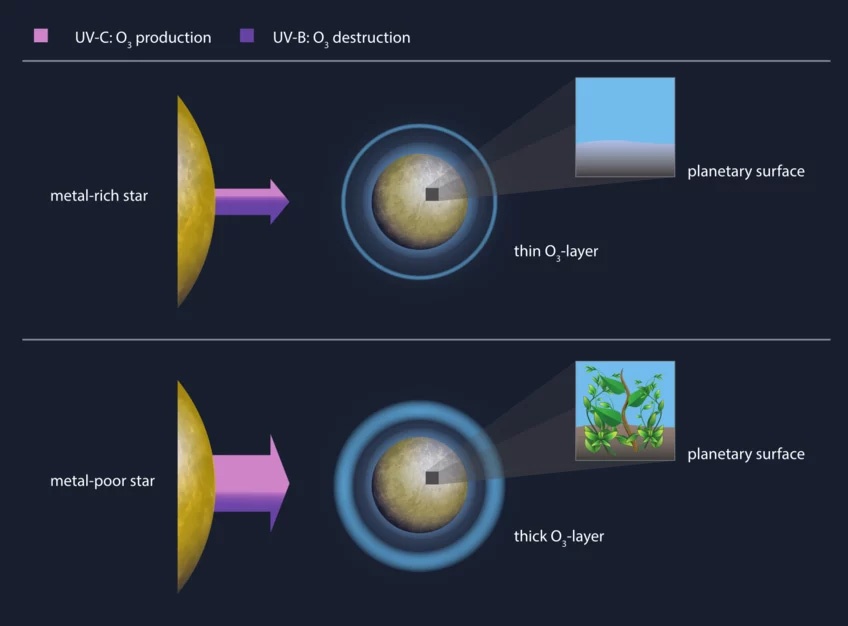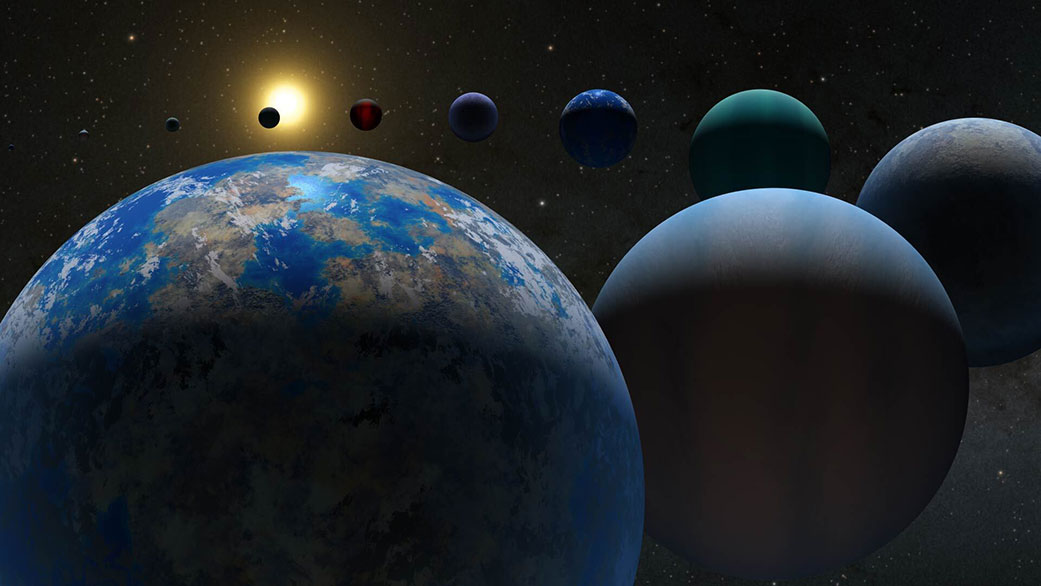In the hunt for habitable worlds around other stars, planetary atmospheres provide fertile places to look. But, as a group of scientists at the Max-Planck Institute for Solar System Studies in Germany found, maybe astronomers should focus on a star’s metallicity, too. That’s because there seems to be a direct link between their metallicity, how much UV radiation they give off, and the atmospheres of rocky planets orbiting them. It turns out that metal-poor stars provide better conditions for life on their planets than metal-rich ones do.
What led the science team to make that link? It all started with a study a few years ago that compared the Sun’s brightness variations with those of many other similar-type stars. Some of those stars showed huge intensity stronger than the Sun’s. “We saw huge peaks in intensity”, says Dr. Alexander Shapiro, who was involved in that work. “It is therefore quite possible, that the Sun, too, is capable of such spikes in intensity. In that case, also the intensity of the ultraviolet light would increase dramatically.”
That raised the question about what such huge outbursts could mean for life on Earth. And, if those spikes happened elsewhere, how it might affect the chances of life on other worlds? In addition, what role does ultraviolet radiation play? So, the researchers did another study. This time, they looked at the UV flux from other stars and compared them to our own star and its effects on our planet. “In the Earth’s atmospheric chemistry, ultraviolet radiation from the Sun plays a dual role,” explained Dr. Anna Shapiro, whose past research interest focused on the influence of solar radiation on Earth’s atmosphere. In interactions with our planet’s atmosphere, it helped thicken the protective ozone layer.
UV Radiation, Ozone, and Planetary Atmospheres
How does that thickening happen? Reactions between different types of UV radiation and individual oxygen atoms and oxygen molecules create and destroy ozone. While long-wave UV-B radiation destroys ozone, short-wave UV-C radiation helps create protective ozone in the middle atmosphere of a planet. “It was therefore reasonable to assume that ultraviolet light may have a similarly complex influence on exoplanet atmospheres as well,” she said. The precise wavelengths play a crucial role and so the astronomers calculated exactly which ones make up the UV emitted by stars.

This is where the metallicity of a star comes into play. Think of metallicity as the ratio of hydrogen in a star compared to other “heavy” elements such as oxygen, carbon, and iron. Low-metallicity stars generally have more hydrogen than anything else. High-metallicity stars (such as one called HD 222925) can have significantly more heavy elements. The Max Planck scientists compared stars like the Sun with others having lower or higher metal content than our star. They created simulations to investigate the variety of conditions at exoplanets that could exist around all types of stars.
In particular, they wanted to estimate the UV radiation effect on hypothetical atmospheres. They also looked at the history of Earth’s atmosphere, particularly over the last half-billion years. That’s the high atmospheric oxygen content and the ozone layer were established. Those allowed the evolution of life on land on our planet. “It is feasible that the history of the Earth and its atmosphere holds clues about the evolution of life that may also apply to exoplanets,” said Jos Lelieveld, Managing Director of the Max Planck Institute for Chemistry, who was involved in the study.
Linking Metallicity to UV Radiation … and Life in the Future
After all the comparisons and simulations were done, the science team was surprised to find that metal-poor stars emit more UV radiation than metal-rich ones do. In fact, in metal-poor stars, the UV-C radiation is stronger. It enables the creation of denser ozone layers on their planets. “Contrary to expectations, metal-poor stars should thus provide more favorable conditions for the emergence of life,” Anna Shapiro.
It gets even weirder as the Universe ages. As it does, it’s going to get more hostile to life. As more metal-rich stars form, there’ll be lower chances for the habitability of their planets. “Stars in the universe are becoming more metal-rich with each generation,” said Shapiro. It’s possible to imagine a time in the very far, distant future when mostly metal-rich stars predominate. They are made from the remains of older stars that blasted their elements out to space. It’s impossible to say that life will simply not get made. However, it does look like the chances for habitable planets will certainly be fewer than they are at present.
For now, though, the idea of using stellar metallicity as a probe for life-bearing planets is a good one. It will help astronomers search through a lot of different stars to look for signs of habitable exoplanets around them.
For More Information
Metal-poor Stars are More Life-friendly
Metal-rich Stars are Less Suitable for the Evolution of Life on their Planets


The Sun is considered a high metallicity star, so if Earth has life it implies UV may not be a big problem. But it is fairly low for a midplane star that lies 8 kpc from the galactic center [“Astrophysical and Cosmological Constraints on Life”,
Paul A. Mason, Peter L. Biermann, in Habitability of the Universe Before Earth, 2018].
… meaning it can be pretty lonely in this part of the galaxy.